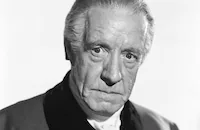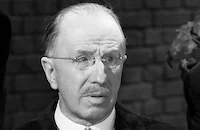O'Brien had worked as a sculptor and cartoonist before he entered the movies. While using clay models of boxers to simulate a fight in 1915, he got the idea for stop-motion photography; by filming a few frames at a time and moving models between shots, he could create an illusion of life. Since he was also fascinated with prehistoric animals, he decided to make a sample film called The Dinosaur and the Missing Link, a five-minute short that took two months to make. He sold the feature to Edison, then went to work for them making similar shorts. O'Brien was convinced he could do more with his models, so he left Edison in 1918 to make a short feature, The Ghost of Slumber Mountain (1919). By this time, he had refined his models. Where he had originally worked with clay on a wooden frame, he created more convincing creatures by using metal skeletons and rubber skins.
In 1920, O'Brien decided he was ready for a feature - the first feature to combine stop-motion and live actors to tell a story. He had signed to make a series of shorts with producer Watterson R. Rothacker, who bought him the screen rights to Doyle's popular novella. O'Brien then spent the next two years doing model work for the film. Although he had art student Marcel Delgado to build the models, O'Brien did all the animation himself. In one ten-hour day, he was lucky to get about 30 seconds of footage. The first anyone saw of his work was a short reel he sent to Doyle for screening at a 1922 meeting of the Society of American Magicians. Doyle hinted that the film was authentic and actually got away with it. He didn't reveal the secret behind the film until the next day, by which time the demonstration had been covered by The New York Times.
After 14 more months of effects work, The Lost World was ready for its human stars, who became the first actors to face the challenge of reacting to off-screen monsters that would be added in the editing room. Heading the cast were future MGM stars Wallace Beery, known mostly for villainous roles at the time, and Lewis Stone, making the transition from swashbuckling heroes to character roles. In The Lost World, he still got to engage in heroics as the famed explorer who keeps his fellow companions alive but moved into the character ranks by losing the leading lady to a younger co-star. Lead actress Bessie Love was making one of her many comebacks as the daughter of the man who had discovered the lost world. One of the most talented and beautiful of all silent-screen stars, Love had some of the worst luck in the industry, rarely getting a chance to capitalize on successes like this film, the William S. Hart western The Aryan (1916) or the early musical blockbuster The Broadway Melody (1929). After earning an OscarÆ nomination for the latter, she moved to England, where she would star mostly on stage.
The Lost World's success brought O'Brien the chance to work on a dream project, Creation, but the production was plagued with delays. When David O. Selznick took over as production head at RKO in the early 1930s, that was one of many delayed projects he was asked to look into. He was so impressed with O'Brien's work, that he started the wheels turning for the special-effects wizard's magnum opus, King Kong (1933).
Meanwhile, The Lost World had suffered at the hands of distributors, who virtually cut the film in half in 1929. It appeared that all of the excised footage had been lost until archivists discovered an almost complete print in Czechoslovakia. That became the basis for a restoration supervised by Eastman House in 1997. Concerned about materials still missing from that version (including the opening sequences involving newspaper reporter Lloyd Hughes' fiancÈe), archivist David Shepard supervised his own restoration, working with the Czechoslovakian print, original trailers for the film and other sources only recently discovered. These were combined and digitally restored to create the version of the film that has its world television debut on Turner Classic Movies. But even Shepard had to admit that some footage may never be recovered. When The Lost World's live-action sequences were originally filmed, the company shot scenes as insurance in case O'Brien's dinosaur footage didn't work. When the effects work was cut into the film, those other scenes were cut, unfortunately leaving a few continuity gaps that may never be resolved.
Director: Harry O. Hoyt, William Dowling
Screenplay: Marion Fairfax
Based on the Novel by Sir Arthur Conan Doyle
Cinematography: Arthur Edeson
Art Direction: Milton Menasco
Principle Cast: Bessie Love (Paula White), Lloyd Hughes (Edward J. Malone), Lewis Stone (Sir John Roxton), Wallace Beery (Prof. Challenger), Arthur Hoyt (Prof. Summerlee), Bull Montana (Apeman).
BW-93m.
by Frank Miller




















